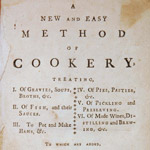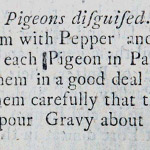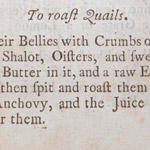Cabinet 08: Economy
Museum Rusticum et Commerciale: Or Select papers on Agriculture, Commerce, etc. Vol. III. London: Printed for R. Davis, and 2 others, 1765. Shoults Eb 1765 M
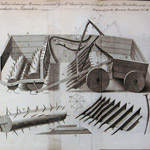 |
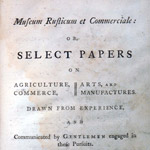 |
Although Aaron Ogden of Ashton-under-Line, near Manchester, made claims to be 'a poor labouring man', he had the initiative to invent 'a Fallow-cleaning machine' and perhaps pay good money for the engraving that accompanies his letter in the third edition of Museum Rusticum et Commerciale (1765). The contributions to this very practical eighteenth century publication were almost entirely agricultural ('Description of a drill for sowing beans', 'Useful observations on malting', 'Of the benefit of chalk to a cold, stiff, clayey soil'), and from a wide range of correspondents, including the agricultural reformer Arthur Young (See Cabinet 07). |
'Buckland Farm Accounts', 1794-1801. DeB MS 42
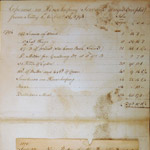 |
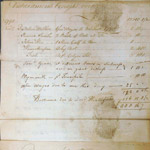 |
These documents relate to a Richard Burrough and the management of Buckland Farm in Devon between 1794 and 1801. The Lord Heathfield mentioned in the poor relief receipt (left) was Sir Francis Augustus Elliot, 2nd Bart. (1750-1813), who inherited the property, including Buckland Abbey, from his uncle Sir Francis Henry Drake 5th Bart. Buckland Abbey is a 700 year old house near Yelverton, Devonshire, known for its connection to the mariner Sir Francis Drake. Note the housekeeping expenses (hogs, cider, butcher's meat) and sundries such as turnpike charges. |
Elizabeth Cleland, A New and Easy Method of Cookery. 3rd ed. Edinburgh: Printed for, and sold by R. Fleming and W. Gray, 1770. DeB Eb 1770 C
While not the first cook or recipe book printed in eighteenth century Scotland, Elizabeth Cleland's A New and Easy Method of Cookery (1755) was by far the most well-known. It was first published in 1755 for the benefit of young ladies at her cookery school near St Giles, Edinburgh. Further editions appeared, including this third edition (1770) which contains 232 pages of recipes (plus index) ranging from gravies and soups to the making and distilling of wine. 'Pigeons disguised' and 'To roast Quails' reflects something of Scottish culinary tastes.


